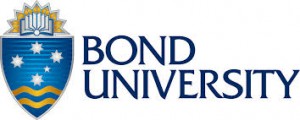University degrees: Courses, Online Courses, Postgraduate
Bond University is Australia’s first private not-for-profit university and is located in Robina, Gold Coast, Queensland. Since its opening on 15 May 1989, Bond University has primarily been a teaching-focused higher education institution featuring a three-semester-per-year timetable. It is also famous for its legal education which ranks top 3 in Australia in terms of graduate employment rate.
The university was established at the initiative of Alan Bond, the founder and Chairman of the Australian-based
The university’s buildings and surrounding land initially covered approximately 212 hectares and encompassed what was previously a pine plantation known as the Burleigh Forest. In the 1970s, Bond had obtained control of a number of pine plantations in the region, previously owned by the Savoy Corporation Limited and Gold Coast Cooperative Plantations Society Limited, and established a new company known as the Development Equity Corporation (DEC) to develop them.
DEC was managed by Brian Orr and, in 1976, Orr put forward a proposal to the Albert Shire Council for a university at Gaven Forest. While this project did not proceed, a subsequent proposal made in 1986 to build a university at Burleigh Forest did gain traction. Orr discussed the matter with Bond and Peter Beckwith and recruited Jo Anne Cracknell to research the feasibility of venture.
On 3 July 1986, Bond decided to proceed with the project and his intention to build the university, then known as the Bond University of Applied Technology, was formally announced at the National Party of Australia conference on the Gold Coast by the Premier of Queensland, Joh Bjelke-Petersen on 17 July 1986.
On 9 April 1987, the Parliament of Queensland granted Bond University university status via the passage of the Bond University Act. In 1989 the university commenced teaching with an initial intake of 322 students.
In 1991, EIE acquired Bond Corporation’s share of the company that controlled the land on which the university buildings were constructed and the surrounding development lands following the collapse of Bond Corporation. By 1993, EIE was in receivership and the Bond University Council commenced negotiations to acquire the campus from the mortgagee, the Long-Term Credit Bank of Japan.
The Bond University Council was not the only entity interested in the site which was advertised for sale in major newspapers. In 1995, the Employment, Education and Training References Committee of the Australian Senate undertook a report into the proposed sale of the campus to the University of Queensland which had outbid the Bond University Council in their earlier negotiations to acquire the site.
In August 1999, the Bond University Council was successful in securing the 50 acre campus site which was acquired by a newly formed public company known as Bond University Limited.
The Bond University campus features a series of Faculty sandstone buildings centred around man-made Lake Orr. The campus was conceived and developed by master planner Daryl Jackson of Jackson Architecture with significant input from Queensland architect Robin Gibson. The signature arch building was designed by Japanese architect Arata Isozaki.
Students at Bond University have access to a number of academic, technological and recreational facilities.
Recent alterations to the campus facilities include:
Other campus facilities at Bond University include:
In 2001, the university established an online MBA course, the Bond-BBT Global Leadership MBA, collaborated with Kenichi Ohmae and Business Breakthrough Inc. in Japan.
Bond University offers private or shared accommodation on-campus and provides assistance for students seeking off-campus accommodation. The John and Alison Kearney Library services the University in two locations on campus, the Main Library and the Law Library. The Library is recognised as a highly customer-focused support service for the University community and external organisations.
